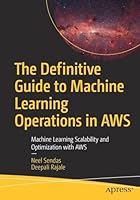
Python Data Analytics: With Pandas, NumPy, and Matplotlib, 2nd Edition
- Length: 569 pages
- Edition: 2nd ed.
- Language: English
- Publisher: Apress
- Publication Date: 2018-11-12
- ISBN-10: 1484239121
- ISBN-13: 9781484239124
- Sales Rank: #348682 (See Top 100 Books)
Explore the latest Python tools and techniques to help you tackle the world of data acquisition and analysis. You’ll review scientific computing with NumPy, visualization with matplotlib, and machine learning with scikit-learn.
This revision is fully updated with new content on social media data analysis, image analysis with OpenCV, and deep learning libraries. Each chapter includes multiple examples demonstrating how to work with each library. At its heart lies the coverage of pandas, for high-performance, easy-to-use data structures and tools for data manipulation
Author Fabio Nelli expertly demonstrates using Python for data processing, management, and information retrieval. Later chapters apply what you’ve learned to handwriting recognition and extending graphical capabilities with the JavaScript D3 library. Whether you are dealing with sales data, investment data, medical data, web page usage, or other data sets, Python Data Analytics, Second Edition is an invaluable reference with its examples of storing, accessing, and analyzing data.
What You’ll Learn
- Understand the core concepts of data analysis and the Python ecosystem
- Go in depth with pandas for reading, writing, and processing data
- Use tools and techniques for data visualization and image analysis
- Examine popular deep learning libraries Keras, Theano,TensorFlow, and PyTorch
Who This Book Is For
Experienced Python developers who need to learn about Pythonic tools for data analysis
Table of Contents
Chapter 1: An Introduction to Data Analysis
Chapter 2: Introduction to the Python World
Chapter 3: The NumPy Library
Chapter 4: The pandas Library—An Introduction
Chapter 5: pandas: Reading and Writing Data
Chapter 6: pandas in Depth: Data Manipulation
Chapter 7: Data Visualization with matplotlib
Chapter 8: Machine Learning with scikit-learn
Chapter 9: Deep Learning with TensorFlow
Chapter 10: An Example— Meteorological Data
Chapter 11: Embedding the JavaScript D3 Library in the IPython Notebook
Chapter 12: Recognizing Handwritten Digits
Chapter 13: Textual Data Analysis with NLTK
Chapter 14: Image Analysis and Computer Vision with OpenCV
Appendix A: Writing Mathematical Expressions with LaTeX
Appendix B: Open Data Sources







